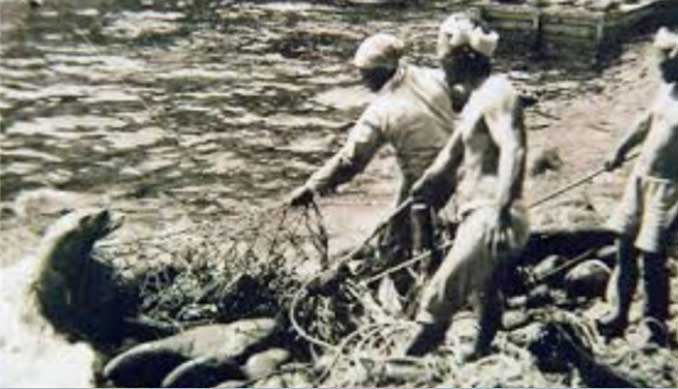Let's check up on Dokdo.Are you interested in Dokdo-related stories? Please click now.
Sea lions found on or near Dokdo
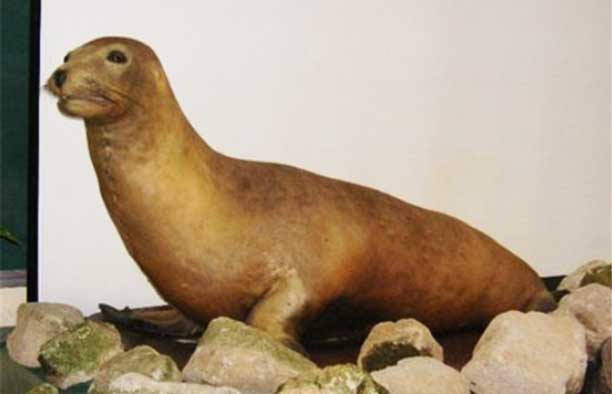
- Name: Dokdo sea lions, Gangchi
- Size: male adult - 2.3-2.5m long and 450-560 kg in weight /adult female: 1.6 m long
- Habitat: Coasts of the North Pacific (i.e. the Korean Peninsula, Sakhalin, and Japan)
-
Features
- A long, thin body shaped like a spindle, cone-shaped short, thin ears, and a tail. Its skin color changes often.
- The body of a young female displays a grayish brown color, with a dark gray middle part of the back. The body of a male displays a yellowish brown color.
- Males mate with several females. They breed in May to August, and give birth mostly on the sandy coastline. Those in Dokdo used to give births on rocks.
- They feed on fish and squid.
- Those in or near Dokdo are known to stay in areas close to the island.
- Japanese fishermen hunted them to excess on or near the island between 1903 and 1941. In 1904 alone, they caught about 3,200 sea lions around Dokdo.
- Since 1976, no trace of them has been found on or near Dokdo.
- In 1996, the International Union for the Conservation of Nature and Natural Resources (IUCN) classified them as an extinct species.
Species that are similar to sea lions
Similar creatures include the walrus, seal, true seal, earless seal, and elephant seal.
-
Gangchi(Sea Lions)
 Source: Wikipedia
Source: Wikipedia
- Size: 1.5-2 m
- They have earflaps.
- They have over-sized fins.
- They use their fins and tail to move.
- They do not have tusks.
-
Walrus
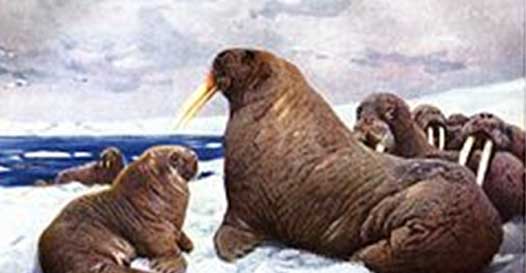 Source: Wikipedia
Source: Wikipedia
- Size: 3.7m
- They do not have earflaps.
- They have oversized fins.
- They use their fins and tail to move.
- They have tusks.
-
Seal
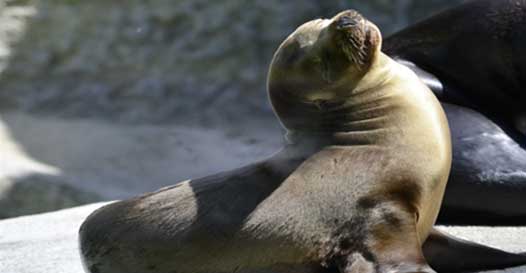 Source: Pixabay
Source: Pixabay
- Size: 1.5-2.5m
- They have earflaps.
- They have over-sized fins.
- They use their fins and tail to move.
- They do not have tusks.
-
Spotted seal
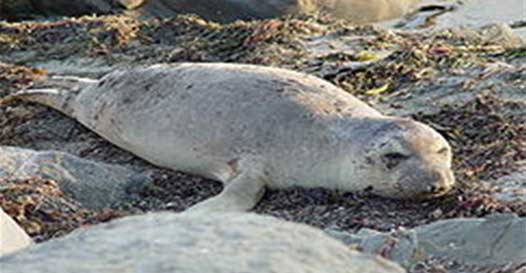 Source: Wikipedia
Source: Wikipedia
- Size: 1.5-2m
- They do not have earflaps.
- They have small fins.
- They use their abdomen to move.
- They do not have tusks.
-
Phocidae Gray
 Source: Namu Wiki
Source: Namu Wiki
- Size: 2.8-4m
- They do not have earflaps.
- They have small fins.
- They use their abdomen to move.
- They do not have tusks.
-
Elephant seal
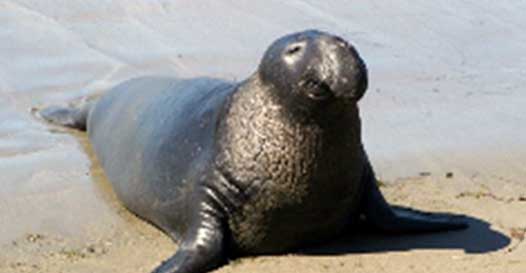 Source: Namu Wiki
Source: Namu Wiki
- Size: 4-5m
- They do not have earflaps.
- They have small fins.
- They use their abdomen to move.
- They do not have tusks.
Sea lions, now extinct!
Until the nineteenth century, Dokdo was a natural habitat for many sea lions, leasing the inhabitants of Ulleungdo Island to call it "Gaji Island" ("Sea Lion Island", after "gaje" in the local dialect).
So why have sea lions completely disappeared from Dokdo?
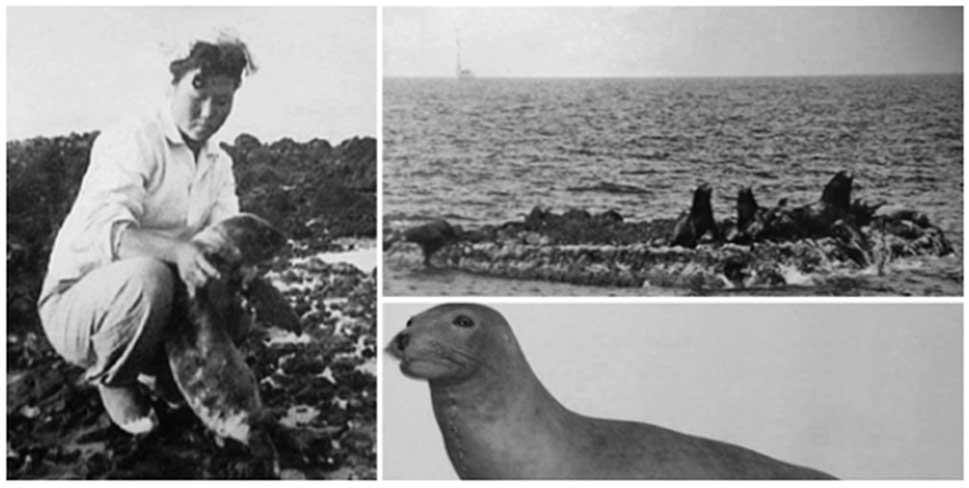
During the days when Korea was under Japanese colonial rule, the Japanese were busy stripping Dokdo of natural resources just as they were everywhere else on the Korean Peninsula. Sea lions were also one of the prized resources sought by the Japanese. Sea lion skin bags enjoyed such great popularity that they won a gold prize at an expo held in Paris. Sea lion oil also enjoyed great popularity.
Japanese fishermen caught sea lions including their young recklessly and cruelly around Dokdo. It is reported that one particular Japanese fishing business caught some 14,000 sea lions on or around Dokdo over the eight years before the forceful signing of the Japan-Korea Annexation Treaty in August 1910. The fishermen used the sea lion’s fat to make edible oil, their flesh and bones for fertilizers and their skin as raw materials for bags and clothes. They also sold young sea lions to circuses.
It is thought that sea lions became extinct between the end of the nineteenth century and the early twentieth century for such a reason. Their existence was confirmed in Dokdo as late as 1972. It is thought that they finally disappeared around 1975. Sea lions disappeared from Dokdo due to the excessive greed of Japanese fishermen.
